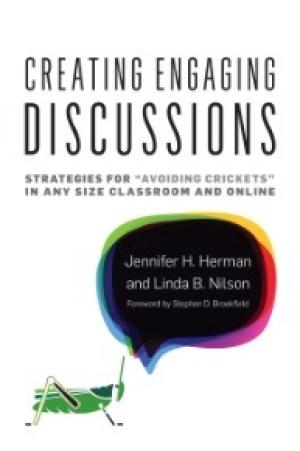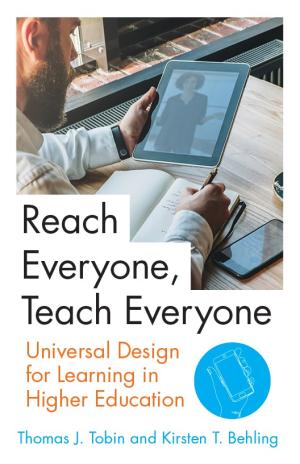Resources by Rachel Miller Jacobs

In the preface to their book, Herman and Nilson note that there are not many book-length treatments of discussion as a teaching method; the relative few that exist focus on student participation and are primarily oriented toward small face-to-face classrooms. Other books feature discussion as one tool among many in the teacher’s toolbox, and again focus on getting students to talk. But, as Herman and Nilson write, “Talk alone is cheap” (xxiv). The fact that students are participating in a discussion does not necessarily mean that they are actually learning. In addition to questions of participation, treatments of discussion as a way of learning also need to take into account the variety of classrooms in which students are learning: large and small, face-to-face, online, and blended. This is what Herman and Nilson set out to do. Chapter one lays out three common challenges of discussion in both online and face-to-face classrooms: inconsistent or uneven student engagement, lack of adequate connection between course goals and discussion content or process, and lack of assessment. Chapters two and three focus on student behavior, chapter four suggests a variety of strategies for ensuring that discussions advance learning, and chapter five details ways to assess discussion both for skillful student engagement and for clear connection to course content. Chapters six through thirteen are case studies, written by a variety of practitioners and addressing a variety of discussion delivery systems (face-to-face, online, and blended) and levels (undergraduate, graduate, and professional). The final chapter, written by Herman and Nilson, provides writing prompts, discussion questions, and workshop ideas that both teachers themselves, and those charged with the professional development of teachers, could use to engage with the book’s contents. Like many of Nilson’s previous books, this one is packed with information. As a practitioner, it is tempting to grab one or more of the discussion activities referenced in the quick guide at the front of the book and then return the book to the shelf. Doing so is a mistake precisely because of one of the ideas this book successfully advances: the need to align discussion content and process with course learning goals. This emphasis on alignment is one of my main learnings from the book, and one I will need to keep pondering and experimenting with. Each teacher must consider her course content, delivery system, institutional objectives and constraints, and student population in wisely selecting and applying discussion tactics to her particular circumstances. If I have one suggestion for the authors of this book, it might be to put the quick reference at the end to underline this point. I will confess that when I picked up the book, I was dubious about the value of the case study chapters for my work as a theological educator. What is the relevance of collaborative autoethnography to a class on Christian worship, or of course-based scientific research to a class on Christian formation? As I continued reading, however, the case studies underlined two of Herman and Nilson’s theses: the need for and value of learning from others, even when their circumstances are different than ours, and the benefits of a deep dive into a tactic rather than a quick ransack of possible takeaways. So having finished reading the book, I plan to read it again – this time with colleagues, and over time.

Advocates for the rights of people with disabilities have worked hard to make universal design in the built environment “just part of what we do.” We no longer see curb cuts, for instance, as accommodations for people with disabilities, but perceive their usefulness every time we ride our bikes or push our strollers through crosswalks. This is also a perfect model for Universal Design for Learning (UDL), a framework grounded in the neuroscience of why, what, and how people learn. Tobin and Behling show that, although it is often associated with students with disabilities, UDL can be profitably broadened toward a larger ease-of-use and general diversity framework. Captioned instructional videos, for example, benefit learners with hearing impairments but also the student who worries about waking her young children at night or those studying on a noisy team bus. Reach Everyone, Teach Everyone is aimed at faculty members, faculty-service staff, disability support providers, student-service staff, campus leaders, and graduate students who want to strengthen the engagement, interaction, and performance of all college students. It includes resources for readers who want to become UDL experts and advocates: real-world case studies, active-learning techniques, UDL coaching skills, micro- and macro-level UDL-adoption guidance, and use-them-now resources. (From the Publisher)